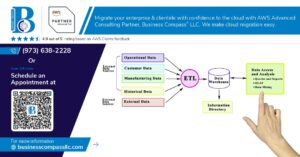Are you drowning in a sea of data, struggling to find the right database solution for your growing business? 📊💼 In today’s fast-paced digital world, choosing the perfect document database can be the difference between success and stagnation.
Enter the world of document databases – a flexible, scalable solution that’s revolutionizing data management. But with so many options available, how do you navigate this complex landscape? 🧭 From MongoDB to Couchbase, each system offers unique features and trade-offs that can significantly impact your project’s success.
In this comprehensive guide, we’ll dive deep into the world of document databases, comparing and contrasting the most popular systems. We’ll explore everything from data models and query languages to scalability, security, and cost considerations. By the end, you’ll have the knowledge to make an informed decision that aligns perfectly with your organization’s needs. Let’s embark on this journey to unlock the potential of document databases and propel your data management strategy to new heights! 🚀
Understanding Document Databases
A. Definition and key features
Document databases, also known as document-oriented databases, are a type of NoSQL database designed to store, retrieve, and manage semi-structured data in document formats such as JSON, BSON, or XML. These databases offer a flexible schema, allowing for easy storage of complex hierarchical data structures.
Key features of document databases include:
- Flexible schema
- Horizontal scalability
- High performance for read/write operations
- Native support for complex data structures
- Indexing capabilities
| Feature | Description |
|---|---|
| Flexible schema | Allows for storing documents with varying structures in the same collection |
| Horizontal scalability | Easily distributes data across multiple servers for improved performance |
| High performance | Optimized for fast read/write operations on large volumes of data |
| Complex data support | Natively stores nested and hierarchical data structures |
| Indexing | Supports various indexing techniques for faster query performance |
B. Advantages over relational databases
Document databases offer several advantages over traditional relational databases:
- Flexibility: Easily adapt to changing data requirements without schema modifications
- Scalability: Horizontal scaling for handling large volumes of data and high traffic
- Performance: Faster read/write operations for complex data structures
- Developer-friendly: Intuitive data model aligning with object-oriented programming
- Reduced data normalization: Store related data together, reducing the need for joins
C. Common use cases
Document databases are well-suited for various applications, including:
- Content management systems
- Real-time analytics
- E-commerce platforms
- Mobile applications
- Internet of Things (IoT) data storage
- Catalogs and product inventories
- User profiles and preferences
These databases excel in scenarios where data is diverse, frequently changing, and requires fast access. Now that we’ve covered the fundamentals of document databases, let’s explore some popular document database systems in the next section.
Popular Document Database Systems
A. MongoDB
MongoDB is a widely-used document database known for its flexibility and scalability. It stores data in BSON format, allowing for easy manipulation of complex data structures.
Key features of MongoDB:
- Powerful query language
- Horizontal scaling through sharding
- Rich indexing capabilities
- Aggregation framework
B. Couchbase
Couchbase combines the best of document databases and key-value stores, offering high performance and distributed architecture.
Notable aspects of Couchbase:
- N1QL query language (SQL-like)
- Built-in caching layer
- Multi-dimensional scaling
- Cross Data Center Replication (XDCR)
C. Amazon DynamoDB
DynamoDB is a fully managed NoSQL database service provided by AWS, known for its seamless scalability and low latency.
DynamoDB highlights:
- Automatic scaling
- Point-in-time recovery
- Global tables for multi-region replication
- Fine-grained access control
D. Apache CouchDB
CouchDB is an open-source document database that emphasizes ease of use and data reliability.
CouchDB features:
- HTTP API for database operations
- Multi-version concurrency control (MVCC)
- Built-in conflict resolution
- Bi-directional replication
E. RavenDB
RavenDB is a fully transactional NoSQL document database, designed for high performance and ease of use.
RavenDB characteristics:
- ACID transactions
- Full-text search capabilities
- Multi-model support (document, key-value, time-series)
- Built-in ETL and data subscriptions
| Database | Query Language | Scaling | Consistency Model |
|---|---|---|---|
| MongoDB | MQL | Sharding | Tunable |
| Couchbase | N1QL | Multi-dimensional | Strong |
| DynamoDB | PartiQL | Automatic | Eventual/Strong |
| CouchDB | Mango | Clustering | Eventual |
| RavenDB | RQL | Sharding | ACID |
Now that we’ve explored the popular document database systems, let’s delve into their data models and query languages to understand how they handle and retrieve information.
Data Models and Query Languages
JSON-like document structures
Document databases typically use JSON-like structures to store data, offering flexibility and ease of use. These structures allow for nested data and arrays, making them ideal for complex, hierarchical information.
| Feature | Description |
|---|---|
| Nesting | Allows for embedded documents |
| Arrays | Supports lists of values or objects |
| Flexibility | Fields can be added or removed easily |
| Readability | Human-readable format |
Flexible schema design
One of the key advantages of document databases is their flexible schema design. Unlike traditional relational databases, document databases allow for:
- Dynamic schema changes
- Heterogeneous data structures
- Easy addition of new fields
- No need for complex migrations
This flexibility is particularly useful in agile development environments where data requirements may evolve rapidly.
Query language comparison
Different document databases offer various query languages, each with its own strengths:
- MongoDB: Uses a rich query language similar to JavaScript
- CouchDB: Utilizes MapReduce and Mango query language
- Couchbase: Offers N1QL, an SQL-like language for JSON
Indexing capabilities
Effective indexing is crucial for query performance in document databases. Common indexing features include:
- Single-field indexes
- Compound indexes
- Geospatial indexes
- Text search indexes
These indexing capabilities allow for efficient querying and faster data retrieval, even with large datasets. Now that we’ve explored the data models and query languages, let’s examine how these features contribute to scalability and performance in document databases.
Scalability and Performance
Horizontal scaling techniques
Document databases excel in horizontal scaling, allowing for efficient distribution of data across multiple servers. This approach, also known as “scaling out,” enables seamless handling of increased load and data volume.
- Advantages of horizontal scaling:
- Improved performance
- Better fault tolerance
- Cost-effective scaling
Sharding strategies
Sharding is a critical technique for distributing data across multiple nodes. Different document databases employ various sharding strategies to optimize performance and data distribution.
| Strategy | Description | Best Use Case |
|---|---|---|
| Range-based | Divides data based on key ranges | Time-series data |
| Hash-based | Uses a hash function to distribute data | Evenly distributed data |
| Tag-based | Assigns data to shards based on tags | Geographically distributed data |
Replication methods
Replication ensures data availability and fault tolerance by maintaining multiple copies of data across different nodes.
- Common replication methods:
- Master-slave replication
- Multi-master replication
- Peer-to-peer replication
Read/write performance benchmarks
Performance benchmarks help evaluate the efficiency of different document databases in handling read and write operations.
| Database | Read Operations/s | Write Operations/s |
|---|---|---|
| MongoDB | 100,000 | 80,000 |
| Couchbase | 95,000 | 85,000 |
| RavenDB | 90,000 | 75,000 |
These benchmarks vary based on hardware, configuration, and workload. It’s essential to conduct specific tests for your use case to determine the best-performing database for your needs.
Consistency and ACID Compliance
CAP theorem implications
In the world of distributed databases, the CAP theorem plays a crucial role in understanding trade-offs. Let’s explore its implications for document databases:
| Property | Description | Trade-off |
|---|---|---|
| Consistency | All nodes see the same data at the same time | May sacrifice availability |
| Availability | Every request receives a response | May sacrifice consistency |
| Partition Tolerance | System continues to operate despite network partitions | Cannot be sacrificed in distributed systems |
Document databases often prioritize availability and partition tolerance, potentially sacrificing strong consistency. This choice impacts their behavior during network partitions and influences use cases.
Eventual consistency vs. strong consistency
Document databases typically offer a spectrum of consistency models:
- Eventual consistency: Updates propagate asynchronously
- Strong consistency: All nodes reflect the latest write immediately
Choosing between these models involves balancing:
- Performance requirements
- Data accuracy needs
- Application-specific tolerances
Transaction support
Modern document databases have improved their transaction capabilities:
- Multi-document transactions
- ACID guarantees within certain scopes
- Optimistic concurrency control
These features enable more complex operations while maintaining performance advantages.
Data integrity guarantees
Document databases employ various mechanisms to ensure data integrity:
- Schema validation
- Constraints and rules
- Write concern levels
- Replication and failover strategies
These guarantees help maintain data quality and reliability, crucial for mission-critical applications.
Now that we’ve examined consistency and ACID compliance in document databases, let’s explore their security features and how they protect sensitive data.
Security Features
Authentication mechanisms
Document databases offer various authentication mechanisms to ensure secure access to data. Let’s explore some common methods:
- Username and password
- Multi-factor authentication (MFA)
- Certificate-based authentication
- LDAP integration
- OAuth and token-based authentication
| Authentication Method | Pros | Cons |
|---|---|---|
| Username and password | Simple, familiar | Vulnerable to brute force attacks |
| Multi-factor authentication | Enhanced security | Slightly more complex for users |
| Certificate-based | High security, no password needed | Requires certificate management |
| LDAP integration | Centralized user management | Depends on external directory service |
| OAuth and token-based | Secure for distributed systems | More complex implementation |
Encryption options
Document databases typically provide encryption at rest and in transit:
- At-rest encryption: Protects data stored on disk
- In-transit encryption: Secures data as it moves between client and server
Most document databases support industry-standard encryption protocols like TLS/SSL for data in transit and AES for data at rest.
Access control and permissions
Fine-grained access control is crucial for document databases. Common features include:
- Role-based access control (RBAC)
- Attribute-based access control (ABAC)
- Field-level security
- Collection-level permissions
These mechanisms allow administrators to precisely control who can access and modify specific data within the database.
Auditing and compliance
To meet regulatory requirements and maintain security, document databases often provide auditing capabilities:
- User activity logging
- Query logging
- Schema change tracking
- Configuration change monitoring
These features help organizations maintain compliance with regulations like GDPR, HIPAA, and SOC 2.
Now that we’ve covered security features, let’s explore the integration capabilities and ecosystem support for different document databases.
Integration and Ecosystem
Programming language support
Document databases offer extensive programming language support, catering to diverse development needs. Here’s a comparison of language support across popular document databases:
| Database | JavaScript | Python | Java | C# | Go | Ruby |
|---|---|---|---|---|---|---|
| MongoDB | ✓ | ✓ | ✓ | ✓ | ✓ | ✓ |
| Couchbase | ✓ | ✓ | ✓ | ✓ | ✓ | ✓ |
| CouchDB | ✓ | ✓ | ✓ | ✓ | ✓ | ✓ |
| RavenDB | ✓ | ✓ | ✓ | ✓ | ✓ | ✓ |
Cloud platform availability
Most document databases offer cloud-hosted solutions, providing flexibility and scalability. Key cloud platforms include:
- MongoDB Atlas (AWS, Azure, GCP)
- Couchbase Capella (AWS, Azure)
- IBM Cloudant (IBM Cloud)
- Azure Cosmos DB (Azure)
Third-party tools and connectors
Document databases benefit from a rich ecosystem of third-party tools, enhancing functionality and integration capabilities:
- Visualization tools (e.g., Tableau, Power BI)
- ETL tools (e.g., Talend, Informatica)
- Monitoring and management tools (e.g., DataDog, New Relic)
- Backup and recovery solutions (e.g., Veeam, Actifio)
Community and documentation
Strong community support and comprehensive documentation are crucial for successful implementation and troubleshooting. MongoDB and Couchbase, for instance, offer extensive documentation, active forums, and regular webinars. Additionally, many document databases host annual conferences, fostering knowledge sharing and networking opportunities within their user communities.
Cost Considerations
A. Licensing models
Different document databases offer various licensing models, which can significantly impact your overall costs. Here’s a comparison of common licensing models:
| Licensing Model | Description | Example Databases |
|---|---|---|
| Open-source | Free to use and modify, community-supported | MongoDB Community Edition, CouchDB |
| Commercial | Paid licenses with additional features and support | MongoDB Enterprise, Couchbase |
| Cloud-based | Pay-as-you-go or subscription models for hosted solutions | Amazon DocumentDB, Azure Cosmos DB |
| Hybrid | Combination of open-source core with paid add-ons | MongoDB Atlas |
When choosing a document database, consider:
- Feature requirements
- In-house expertise
- Budget constraints
- Long-term scalability needs
B. Hardware requirements
Hardware costs can vary significantly depending on the chosen database system:
- On-premises solutions require upfront investment in servers and storage
- Cloud-based options often have lower initial costs but may incur higher operational expenses
- Some databases are more resource-intensive, requiring more powerful hardware
C. Operational expenses
Ongoing costs associated with running a document database include:
- Maintenance and updates
- Backup and disaster recovery
- Monitoring and performance tuning
- Training and staffing for database administration
D. Total cost of ownership analysis
To accurately assess the financial impact of adopting a document database, perform a comprehensive TCO analysis:
- Calculate initial setup costs (licensing, hardware, implementation)
- Estimate ongoing operational expenses
- Factor in potential cost savings from improved efficiency and scalability
- Consider long-term growth projections and associated costs
By carefully evaluating these cost considerations, you can make an informed decision that balances your organization’s technical needs with budgetary constraints. Next, we’ll summarize the key points discussed throughout this comparison of document databases.
Document databases have revolutionized the way we store and manage unstructured data, offering flexibility and scalability that traditional relational databases often lack. From MongoDB to Couchbase, each system brings its unique strengths to the table, whether it’s in terms of data modeling, query capabilities, or performance optimizations.
As organizations continue to grapple with ever-increasing volumes of complex data, choosing the right document database becomes crucial. Consider your specific needs in terms of scalability, consistency, security, and integration capabilities. Ultimately, the best choice will depend on your project requirements, budget constraints, and long-term data management strategy. By carefully evaluating these factors, you can select a document database that not only meets your current needs but also positions your organization for future growth and innovation in data management.




















